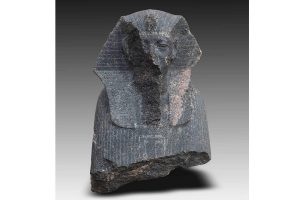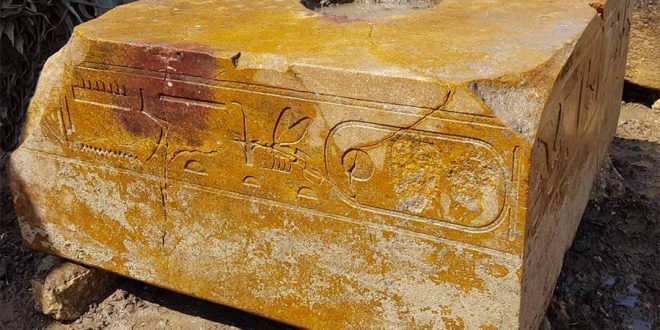Nevine al-Aref – Ahram Online
An Egyptian-German archaeological mission has recently unearthed the foundation blocks of the Temple of the Sun at the open-air museum of Matariya, in Cairo’s Heliopolis. The uncovered foundations date back to the reign of the pharaoh Khufu.
“For the first-time fragments of the Fourth Dynasty king Khufu (c. 2580 BC) were found in Heliopolis. They may belong to a hitherto unknown building precinct of Khufu at Matariya, or they could have been brought from the pyramid district at Giza as building material during the Ramesside Period”, according to Dietrich Raue, head of the German mission.
Other discoveries by the mission, headed by Ayman Ashmawy and Dietrich Raue, in the western periphery of the site include the foundations of a courtyard, a pedestal of Amasis (570-525 BC), and several altar installations from the Late Period.
“Numerous fragments of statuary, mainly sphinxes, provide evidence for the continuous royal presence in the area by kings Amenemhat II, Sesostris III (1882-1842 BC), Amenemhat III (1842-1795 BC), Amenemhat V (1776-1773 BC), Thutmosis III (1479-1425 BC), Amenhotep II, Amenhotep III, Horemheb (1319-1292 BC), Ramesses II (1279-1213 BC) and Seti II (1204-1198 BC)”, Ashmawi said.
“The longstanding investment in Matariya’s Temple of the Sun is evident by the many stele, naos, and altar fragments of Amenemhat IV (1802-1793 BC), Sobekhotep IV (1712-1701 BC), Ay (1323-1319 BC), Seti I (1290-1279 BC), Osorkon I (925-890 BC), Takeloth I (890-877 BC) and Psametik I (664-610 BC)”, he added.
The discovery located fragments of a quartzite model with miniature sphinxes by Amenhotep II and a base of a colossal baboon statue of red granite. All fragments were discovered in various layers of debris, which date back to the Roman, Late Roman, Early Islamic, Mamluk and Ottoman periods.
Excavations provided the missions with additional evidence for the earlier history of the area, in which several layers of Dynasty Zero (Naqada IIIB) (c. 3100-3000 BC) were identified.
Raue explained, “vast layers of pottery debris indicate ritual activities in the earlier third millennium BC and an intense distribution activity during the third and fourth dynasties (c. 2686-2494 BC). Old Kingdom activity was evident by a red granite fragment of Pepy I (c. 2280 BC) with the depiction of Horus”.







